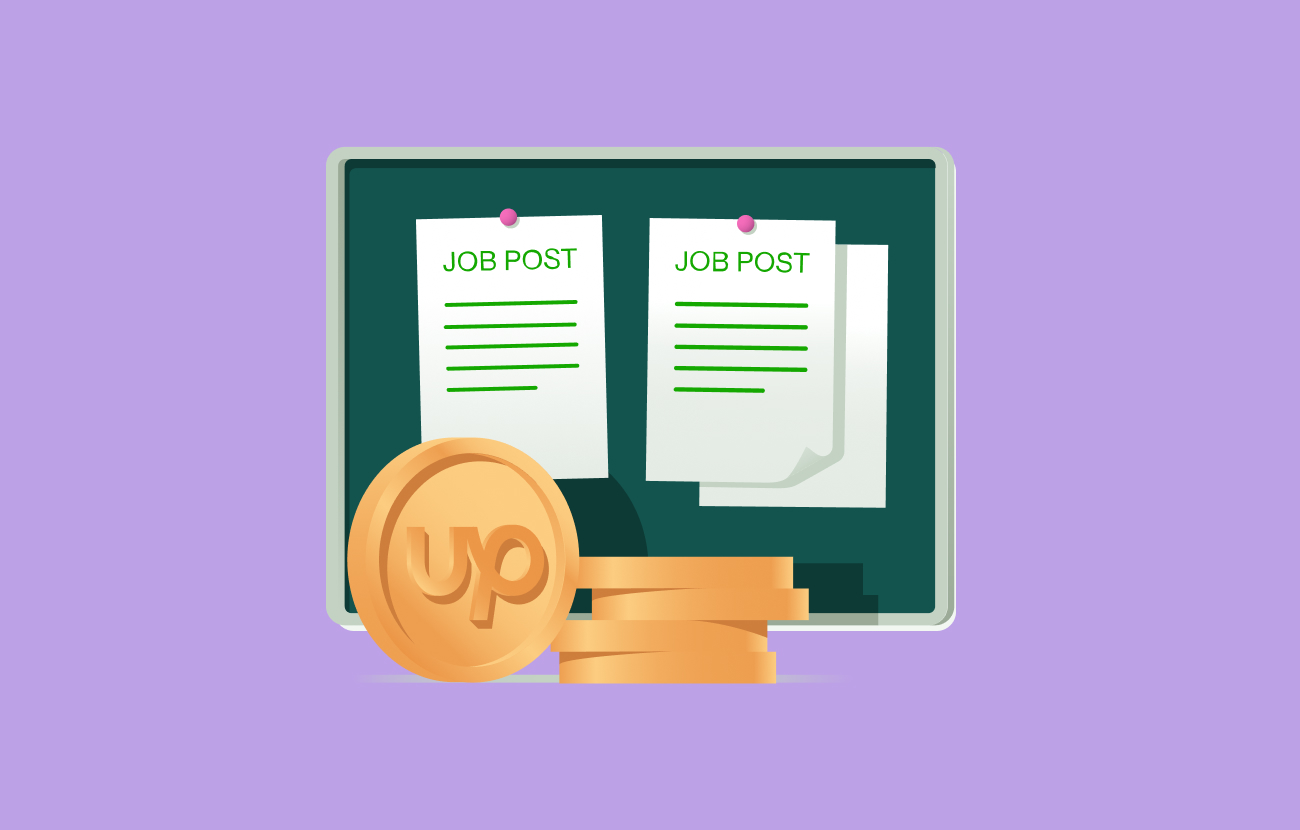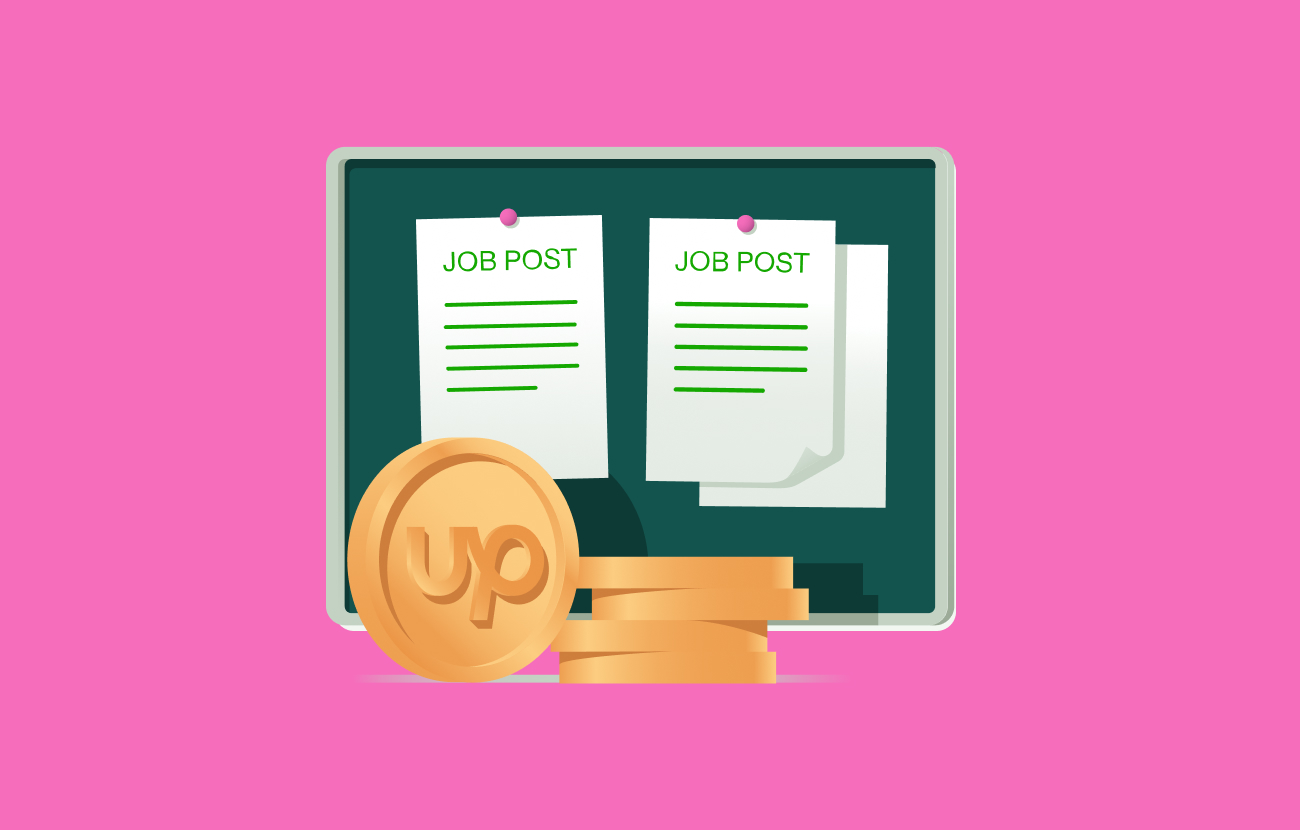48-Hour GTM Sprint With Microteams: Build, Test, and Learn Faster
Learn how your team can run a focused sprint to test ideas, validate strategy, and move faster with AI-enabled freelancers and Upwork Business Plus.

Your team knows how to move fast, but speed without focus wastes time and energy. Whether you're refining a feature, testing a new workflow, or validating a campaign, the real challenge isn’t speed — it’s clarity: knowing what matters and where to focus next.
That’s where a 48-hour go-to-market (GTM) sprint comes in.
A GTM sprint is a tight, time-boxed process for testing ideas, collecting meaningful data, and making smarter decisions without slowing your day-to-day work. Including a micro-team — a few people with complementary skills — can help you move faster and learn more with every test.
The sprint concept borrows from Eric Ries’s “The Lean Startup,” using the “Build → Measure → Learn” feedback loop. It tests real assumptions by launching a minimum viable product (MVP).
With a narrow scope, clear objective, and a firm 48-hour limit, you can validate a product concept, pilot a new workflow, or gauge interest in an offer before committing real resources.
Before the clock starts: Pick the right project
The most effective sprints start small and end with clear direction. You’re not overhauling your entire go-to-market strategy in 48 hours; you’re isolating one critical assumption and testing it fast. Think of it as risk reduction through learning.
Before the sprint begins, clarify what your 48-hour test is actually in service of. Use this framework to focus your effort:
- Define the initiative. What larger goal is this sprint helping advance?
- List your key assumptions. What needs to be true for the initiative to work?
- Identify the riskiest one. What assumption is most likely to fail — or cost you if it does?
- Define the signal. What observable behavior would confirm or disprove that assumption?
Here’s how that might look:
Strong sprints focus on decisions that can’t wait: initiatives that benefit from real-world validation now, not another round of planning.
Day one: Plan and build
The first day sets the pace. This is where ideas turn into motion and strategy becomes tangible. The goal isn’t to rush; it’s to channel your team’s momentum into something real enough to learn from.
Define the sprint objective
Start by turning your riskiest assumption into a question:
“Will [the right people] do [a specific action] that proves this is worth pursuing?”
For example:
- Will customers sign up to preview our new feature?
- Will our team adopt a new workflow if it saves 30 minutes a day?
- Will prospects request a demo after seeing the new positioning on our landing page?
A strong sprint objective is specific, testable, measurable, and achievable in 48 hours. Avoid vague goals like “increase engagement.” Instead, aim for clear signals of intent: clicks, sign-ups, or adoption.
Assemble your microteam
A sprint moves fast not because it’s solo work, but because it’s deliberately small and cross-functional. The magic lies in bringing together a microteam, a few people with complementary skills who can move fast without layers of approval.
Freelancers amplify the effectiveness of this model. They bring specialized expertise without long onboarding, letting you scale capacity exactly when needed. With AI-enabled tools and Upwork Business Plus, you can assemble this team in hours, not weeks.
That’s what Marcelo Ortega, founder of Eidos.ai, found when building his AI-focused agency through Upwork. He explains:
“What’s a better option: Hiring someone who has to learn about your company as well as their new position, or working with an agency who’s done this before with other companies — maybe even ones similar to yours — who understands the challenges and current trends impacting AI projects?”
In your sprint, that might mean bringing in:
- A designer to turn rough ideas into a testable prototype
- A copywriter to sharpen value props or customer messages
- A developer or AI specialist to automate, integrate, or simulate new functionality
- A small agency to handle technical setup while your team focuses on insights
If your contributors span time zones, try the follow-the-sun model — passing work across time zones to sustain progress around the clock.
Build a testable version
A minimum viable product (MVP) isn’t a finished product; it’s the smallest version of your idea that can generate useful feedback. In a 48-hour sprint, that means stripping the idea down to essentials.
Your MVP might be:
- A clickable mock-up that demonstrates a feature
- A landing page describing a new service, with a call to join a waitlist
- A short demo video shared internally to gauge reaction
- An AI-generated prototype or automated workflow simulation your team can test
AI tools can accelerate this stage dramatically, helping teams design, simulate, or automate early concepts in hours instead of days. The most effective approach is to integrate AI as an enabler, not a replacement — especially since many freelance professionals augment their work with the latest AI tools to prototype or validate ideas faster.
Your MVP should feel realistic enough to prompt honest responses, but simple enough to build quickly.
Launch and start gathering feedback
Go back to your sprint objective: What were you hoping to learn? And what signal would show you're on track?
Share your MVP where the right people will see it, and where you can observe that signal in action. If it’s customer-facing, post in a niche community, share it on social, or send to a focused list. For internal tests, demo it live or drop it in Slack.
You don’t need thousands of impressions — you need signal, not scale. A few engaged testers can reveal as much or more than a crowd.
A highly focused feedback loop is exactly what Cory Hymel, VP of product and research at CoreStory, needs for his work. His team regularly hires freelance researchers and specialists to support fast-paced AI innovation, from user studies to prototype testing.
“Going from posting to hire can take as little as 15 to 20 minutes,” Hymel says. “Whether it’s for research studies or just bringing someone in to help build an experiment test harness, the ability to move fast is critical.”
End of day one: Do a mini debrief
Before you wrap for the day, bring the team together for a quick check-in:
- What activity or signals are showing up?
- Does anything need to be clarified or fixed?
- What’s tomorrow’s priority?
- Did anything surprise you?
Capture quick notes: screenshots, quotes, data points. A shared doc or dashboard helps your microteam stay aligned without friction.
Then step away. Getting rest is part of the sprint. Reflection can sharpen insight as much as iteration does.
Day two: Learn and iterate
Day two turns activity into insight. By now, your microteam should see early reactions. Pause to assess together: What’s working? What’s not? Where should you focus next?
Review and reframe
Return to your sprint objective. What were you testing? What signal were you watching for?
Now look again: Did people engage as expected, or differently? What are the patterns in what they clicked, ignored, or questioned?
Seeing no signal is still a signal. It shows where your message or offer isn’t landing yet, giving you a clear next move.
Make adjustments
If part of your MVP clicked, why? If something didn’t, what might explain that?
Make small, deliberate tweaks — not full rebuilds. Try refining one or two elements:
- Adjust your headline or value proposition
- Clarify the problem your idea solves
- Narrow or shift your target audience
- Add an automation or AI-powered enhancement to simplify delivery
Measure what changes, then test again.
Relaunch and measure again
As the sprint wraps, capture what you learned while it’s fresh. A short summary works fine:
- What you built and why
- What you tested and how
- What you learned
- What you’ll do next
AI tools can make this faster and more complete. Use them to organize notes, summarize team discussions, or extract key patterns from project data. If you’ve been tracking activity in a shared document or workspace, a quick AI-generated summary can surface insights and save time as you plan the next sprint.
Each sprint builds momentum for the next. Over time, these learnings become your team’s library — a growing resource for faster, better decisions.
Use speed to create clarity
With this approach, speed can sharpen strategy. It cuts through debate and delay, replacing guesswork with data you can act on. Every experiment reduces uncertainty — building instincts, confidence, and adaptability.
That adaptability grows faster with the right support. Upwork Business Plus gives lean teams instant access to prevetted freelancers and AI tools that help them test and scale smarter. In just hours, you can start to spin up a microteam, run a focused sprint, and move a critical project from idea to insight — all without slowing your business down.
When every decision counts, clarity is your greatest advantage.






.png)
.png)
.png)
.png)
.png)



.svg)
.svg)





















